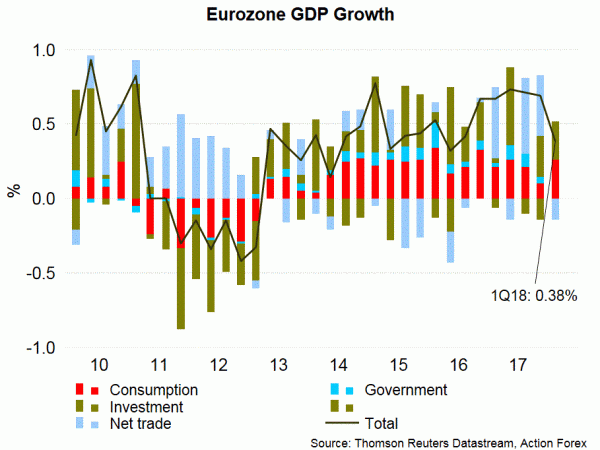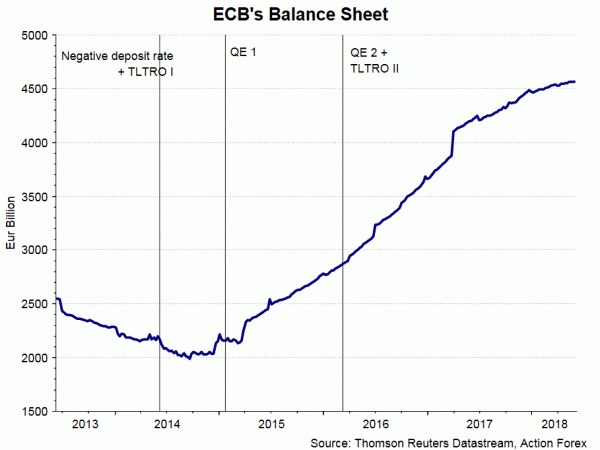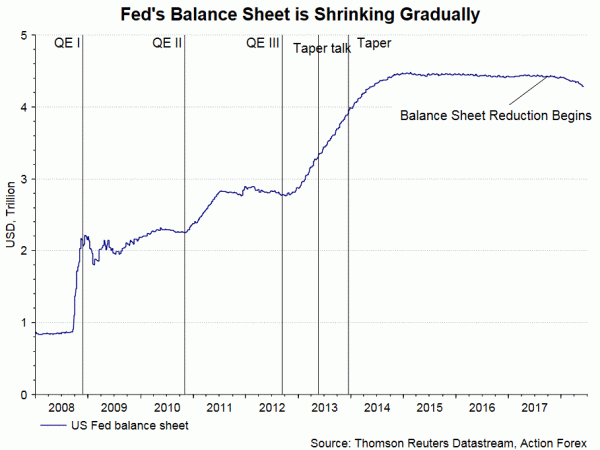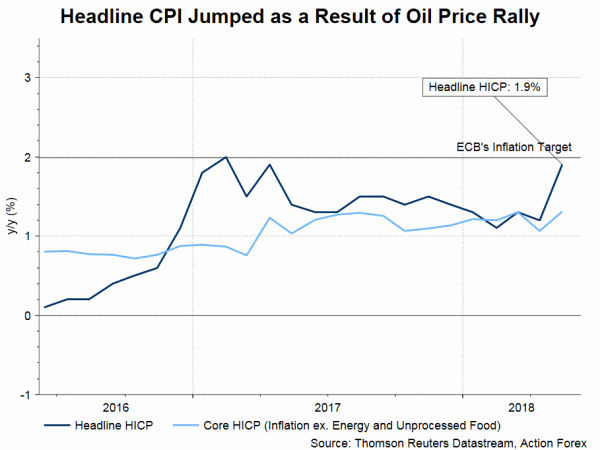The recovery in euro since late-May gathered momentum last week after ECB Chief Economist and executive board member Peter Praet signaled the central bank would discuss QE tapering at this week’s meeting. We are not surprised by this as it is appropriate for the members to communicate with the market its next week after the current asset purchases end in September. We believe July would be a better time for the announcement as the members could assess more indicators before making a decision. This is particularly important at the current period of economic growth slowdown, rising protectionism from the US and ongoing political uncertainty in the peripheral Eurozone. The single currency would likely strengthen after the tapering announcement. Yet, any further appreciation would be short-lived as policy divergence between the Fed and ECB remains. After the QE exit (we expect by December 2018), ECB would reinvest the proceeds from the maturing bonds, similar to what the Fed was doing to maintain its expanded balance sheet at US$ 4.5 trillion during the period of 2014 to 2017. Yet, the Fed has already finished the process and is now occupied with balance sheet reduction and rate hike.
As Praet suggested last week, “signals showing the convergence of inflation toward our aim have been improving, and both the underlying strength in the Euro area economy and the fact that such strength is increasingly affecting wage formation supports our confidence that inflation will reach a level of below, but close to, +2% over the medium term”. He added that “waning market expectations of sizeable further expansions of our program have been accompanied by inflation expectations that are increasingly consistent with our aim”. Probably the most important part of his speech is as follows: “next week, the Governing Council will have to assess whether progress so far has been sufficient to warrant a gradual unwinding of our net purchases”. This is interpreted as a hawkish message by the market, as it signals less stimulus going forward.
ECB’s current asset purchase of 30B euro per month will end in September. It is widely understood that the members would have to communicate with the market the next step in either June or July, as September would be to rush for the market to prepare. We expect the June meeting would be one for the discussion on the available options of the tapering process while an announcement of the decision would be made in July. That said, we do not feel surprise if an announcement is made this month. In our opinion, there are several approaches that the members to take. For instance, ECB could choose to reduce the purchase to zero in September. It might also trim the purchase size to 10B euro per month until December or take a even linear approach by reducing the monthly buying size to 15B euro, 10B euro and 5B euro in October, November and December, respectively. Our base case is that ECB would prefer to end the program by December. As such either of the above approaches should not make might difference.
We should start to move the focus to the rate hike schedule. ECB has affirmed for some time that the key ECB interest rates would “remain at their present levels for an extended period of time, and well past the horizon of our net asset purchases”. We do not expect any rate hike at least until September 2019 but any move should be data-dependent. The forward guidance is of great importance. We expect to see a change in forward guidance on the same day as QE tapering announcement. For a more concrete forward guidance, we believe it would help improve communication with the market if the central bank is more specific about for how much more time the current interest rate would remain. It would also help if ECB assures that any rate hike would gradual and in small size, e.g. +10 bps.
What is certain to be released in June is the updated staff economic projection. GDP growth moderated to +0.4% q/q in 1Q18, from +0.7% in the prior month. Headline CPI accelerated to a 13-mongh high of +1.9% y/y in May, up from +1.2% in the prior month. However, this was mainly driven by the rally in oil price and weakness in the euro. Excluding energy and unprocessed food, core inflation remained soft, improving to +1.3% from April’s +1.07%. We expect the members to revise lower economic growth forecast, reflecting greater concern over protectionism, and revise higher inflation outlook.

















